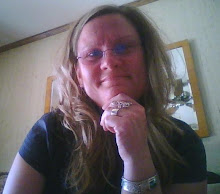I bought a ring sizer so that I would be able to do this again if I had to. I got one of the inexpensive Rathbun ring sizers that they sell at Rio Grande. It is a simple design, using percussion to stretch the ring from the inside out. I was psyching myself up for the arrival of the ring. “It will be easy.” I said to myself, over and over. All I have to do is stretch a little and anneal it, stretch a little and anneal it and stretch a little more. I would just be careful and go slowly. That was all that I needed to do.

I showed it to River, my quality control inspector, and she immediately found the gap. She gave me that look that says, ‘I know you can do better than this’ and I knew I had to figure it out. I had no idea how I could fix it, but I knew that I wasn’t going to deliver it like that or pay someone else to fix it. I just had to do what Yoda taught me. Just try, and if you mess it up, fix it.

I thought, maybe I would flow a little gold solder in the gap and that would reduce the appearance of the gap. No such luck. I couldn’t get the solder to flow. It just stuck to the ring at an odd angle that turned the ring into a wannabe box cutter. That wouldn’t do. I pickled it and fluxed it again. I applied my two little torches to heat up the metal to the point that it would flow the solder but not the gold. It got that scary look like the gold would melt right into the silver and before I could take the torches away I heard the snap. The ring broke, right at the gap. The seam of the ring opened right up. Aaaaagh!
I was so frustrated. I wanted to blame my quality control department for the awful fate that had befallen me, but Yoda loomed in my head, ‘just try and fix it.’ I threw it in the pickle pot and stewed over my fate for a few minutes.
Then I took it back to my bench pin and sawed through the seam with the solder and the porous silver. I filed the ends so they would match up neatly and I wrapped it in wire to hold it closed while I, once again, soldered it closed. It looked like hell by now and the gold was even further from touching. I have learned that gold and silver do not expand at the same rate. At that point I had to stop and walk away.

I left the studio and went to go make dinner. While dinner was cooking, I scoured the internet for advice on soldering gold to silver. I found an article that said use silver solder, not gold. It flows at a lower temperature than gold. That might be the answer, I thought. I finished making dinner.
Back in the studio I took a small cutting of gold and soldered it to the band with silver solder. It worked just fine. It looked ugly, but it wasn’t anything that couldn’t be fixed with files. Hopefully the silver would hold out. It did.













